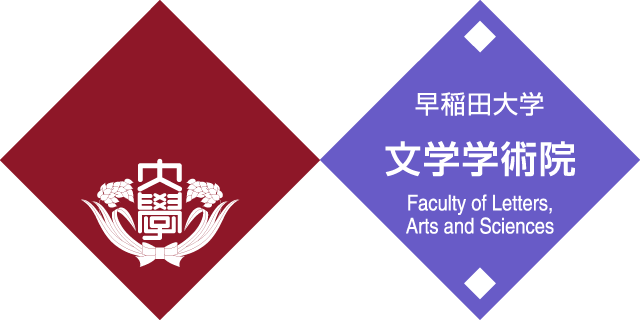- News
- Online Workshop Report: “The current status of Globalization in Japanese Studies -From the viewpoint of history in East Asian Culture-“
Online Workshop Report: “The current status of Globalization in Japanese Studies -From the viewpoint of history in East Asian Culture-“

- Posted
- 2021年8月31日(火)
Online Workshop: “The current status of Globalization in Japanese Studies -From the viewpoint of history in East Asian Culture-“
- Date and time: July 24, 2021, 10:00 – 12:00 (JST) / July 23th, 2021, 21:00– 23:00 (NYT)
- Speaker: Kazuaki Komine, Tomoyuki Someya, Haruo Shirane, Bunkyo Kin
- Moderator: Sungsi Lee, Kimiko Kono
- Language: Japanese
- Venue: Online
- Sponsored by: Ryusaku Tsunoda Center of Japanese Culture, Global Japanese Studies Model Unit, Waseda University Top Global University Project
On July 24 (Sat.), the workshop “The current status of Globalization in Japanese Studies – From the viewpoint of history in East Asian Culture–” took place online via Zoom, and the following four researchers presented to a virtual audience of around 100.
The workshop was planned and held to commemorate the publication of the four volumes of Higashi Ajia Bunka Kōza [Lectures on East Asian Culture] in March 2021 by Bungaku Tsushin. These volumes were edited by Tomoyuki Someya, Bunkyo Kin, Kazuaki Komine, and Haruo Shirane.

The event began with opening remarks by Lee Sungsi, professor at Waseda University. As part of these remarks, Lee described how these lectures gathered together a diverse array of authors, numbering over 150, who engaged in a grand project to show what the internationalization of Japanese studies should look like by reconsidering Japanese literature and culture through the lens of the broader East Asian cultural sphere. Lee also explained that the workshop was in commemoration of the publication of these lectures and that each of the editors of the four volumes would be speaking. (Movie ①)
 The next part of the workshop consisted of a keynote address by Kazuaki Komine (Rikkyo University), who edited volume 3, Higashi Ajia ni Kyōyū Sareru Bungaku Sekai: Higashi Ajia no Bungaku-ken [The Literary World Shared by East Asia: The East Asian Literary Sphere]. Komine touched upon the rapid development of Japanese studies outside Japan and presented what he regarded as a sense of crisis concerning the limitations of Japanese studies conducted in Japanese only—research limited to within one country and inward-facing. Komine went on to note the importance of collaborative research—conducted against a backdrop of competition between the current global lingua franca of English (the de facto universal language) and regional and local languages—within East Asia, a broad cultural sphere comprising the areas where writing systems employ Chinese characters or where there is a history of reading and producing texts in classical Chinese. (Movie ②)
The next part of the workshop consisted of a keynote address by Kazuaki Komine (Rikkyo University), who edited volume 3, Higashi Ajia ni Kyōyū Sareru Bungaku Sekai: Higashi Ajia no Bungaku-ken [The Literary World Shared by East Asia: The East Asian Literary Sphere]. Komine touched upon the rapid development of Japanese studies outside Japan and presented what he regarded as a sense of crisis concerning the limitations of Japanese studies conducted in Japanese only—research limited to within one country and inward-facing. Komine went on to note the importance of collaborative research—conducted against a backdrop of competition between the current global lingua franca of English (the de facto universal language) and regional and local languages—within East Asia, a broad cultural sphere comprising the areas where writing systems employ Chinese characters or where there is a history of reading and producing texts in classical Chinese. (Movie ②)
 Following the keynote, the other three editors spoke about the aims of their respective volumes. Tomoyuki Someya (Ibaraki Christian University), editor of the first volume, Hajime ni Kōryū Ariki: Higashi Ajia no Bungaku to Ibunka Kōryū [First There Were Exchanges: Intercultural Exchanges of East Asian Literature], focused on the perspectives of the periphery and outer periphery in respect to East Asian cultural exchanges and mentioned the issue of when economics within the context of globalization first came to form the foundation for culture and civilization. (Movie ③)
Following the keynote, the other three editors spoke about the aims of their respective volumes. Tomoyuki Someya (Ibaraki Christian University), editor of the first volume, Hajime ni Kōryū Ariki: Higashi Ajia no Bungaku to Ibunka Kōryū [First There Were Exchanges: Intercultural Exchanges of East Asian Literature], focused on the perspectives of the periphery and outer periphery in respect to East Asian cultural exchanges and mentioned the issue of when economics within the context of globalization first came to form the foundation for culture and civilization. (Movie ③)

Haruo Shirane (Columbia University), editor of the fourth volume, Higashi Ajia no Shizenkan: Higashi Ajia no Kankyō to Fūzoku [The East Asian View of Nature: The Environment and Mores of East Asia], mentioned the importance of interdisciplinary research and described his experience with interdisciplinary courses on East Asia taught at Columbia University. He provided the specific example of a course concerned with both the Otogi-zōshi group of illustrated Muromachi-era narratives and disability studies. (Movie ④)
 Bunkyo Kin (Kyoto University), editor of the second volume, Kanji wo Tsukatta Bunka wa Dō Hirogatteita no ka? Higashi Ajia no Kanji Kanbun Bunka-ken [How Did Culture Employing Chinese Characters Spread? The Chinese Character and Classical Chinese-Based Cultural Sphere of East Asia], presented transformations in attitudes toward Chinese characters and writings in classical Chinese, which differed by time and place and were sometimes influenced by political factors. For example, Kin expressed concerns about the increasing usage of arbitrary readings for Chinese characters that he attributed in part to decreased proficiency with these characters, noting a growing deviation from the norm that Chinese characters belong to a category of written symbols that possess a certain prescribed set of readings. A representative example of this phenomenon that Kin gave was that of so-called kirakira nēmu in contemporary Japan. The term, literally “glittery names,” refers to given names for children that do not follow customary readings associated with the Chinese characters used to write them and that are sometimes the subject of mockery and controversy. (Movie ⑤)
Bunkyo Kin (Kyoto University), editor of the second volume, Kanji wo Tsukatta Bunka wa Dō Hirogatteita no ka? Higashi Ajia no Kanji Kanbun Bunka-ken [How Did Culture Employing Chinese Characters Spread? The Chinese Character and Classical Chinese-Based Cultural Sphere of East Asia], presented transformations in attitudes toward Chinese characters and writings in classical Chinese, which differed by time and place and were sometimes influenced by political factors. For example, Kin expressed concerns about the increasing usage of arbitrary readings for Chinese characters that he attributed in part to decreased proficiency with these characters, noting a growing deviation from the norm that Chinese characters belong to a category of written symbols that possess a certain prescribed set of readings. A representative example of this phenomenon that Kin gave was that of so-called kirakira nēmu in contemporary Japan. The term, literally “glittery names,” refers to given names for children that do not follow customary readings associated with the Chinese characters used to write them and that are sometimes the subject of mockery and controversy. (Movie ⑤)
 At the end of the workshop, those who attended the event in real time had an opportunity to engage in a question and answer session with the four presenters. This session was moderated by Waseda University’s Kimiko Kono. There were queries from researchers as well as students, all of which led to lively and important discussions that held the possibility of leading to resolutions to points of contention concerning studies of Japan and East Asia in the current Japanese research climate. Thus, the workshop concluded with anticipation of further developments in the internationalization of, and move toward interdisciplinary approaches to, Japanese and East Asian studies. (Movie ⑥)
At the end of the workshop, those who attended the event in real time had an opportunity to engage in a question and answer session with the four presenters. This session was moderated by Waseda University’s Kimiko Kono. There were queries from researchers as well as students, all of which led to lively and important discussions that held the possibility of leading to resolutions to points of contention concerning studies of Japan and East Asia in the current Japanese research climate. Thus, the workshop concluded with anticipation of further developments in the internationalization of, and move toward interdisciplinary approaches to, Japanese and East Asian studies. (Movie ⑥)
- Tags
- Event Reports
